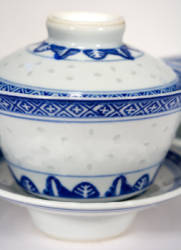Reading has had a profound impact on my life. From early on, to when my mother would walk us to the library where we would sit and read and discover for hours on end, to teaching myself about computers, programming, networking, and more. It has formed my foundation, given me escape, allowed me to see places that would have otherwise been dark, laugh, cry, go to college and start a life. It has been one of the most important parts of my life, and me. I still devour technical and computer books weekly and just about any other book I can get my hands on. I also still find an evening at Borders in a leather chair, a terrible cup of tea from Seattle’s Best, and a stack of books to be pretty close to heaven.
I have a “system” where occasionally I’ll buy a totally random book based simply on title, cover art/photo, or some other gravitational pull. Running With Scissors was one of these, and opened me up to Augusten Burroughs’ other work like Magical Thinking. But this one hit on multiple levels. The title: Leaving Microsoft to Change the World, which appeals to me and my dislike for the company. And the cover: A man standing next to a heavily burdened yak. Undeniable.
The book is written by a man named John Wood who decides to leave a high paying job in the heady bubble days of technology to start a non-profit organization which builds schools and libraries in poor countries such as Nepal. He’s no professional writer, but the book does a great job of following his trajectory and the high and low points of his journey. One particular part that stuck with me was a piece about one of his initial trips to Nepal where he was taken to a school “library.” The room was barren with an outdated map and a locked cabinet. When the locked cabinet was opened it contained a few castoffs from travelers and hikers like Danielle Steele romance novels and other English literary masterpieces of the same ilk. Totally inappropriate for the children in both reading level and content… not to mention quite an introduction to reading. He then decided, somehow, he would have an impact in these kids lives and give them a chance to succeed.
A great book and certainly a Good Read. The organization is called Room to Read and can be found online at: http://www.roomtoread.org/



 Posted by teasphere
Posted by teasphere 
